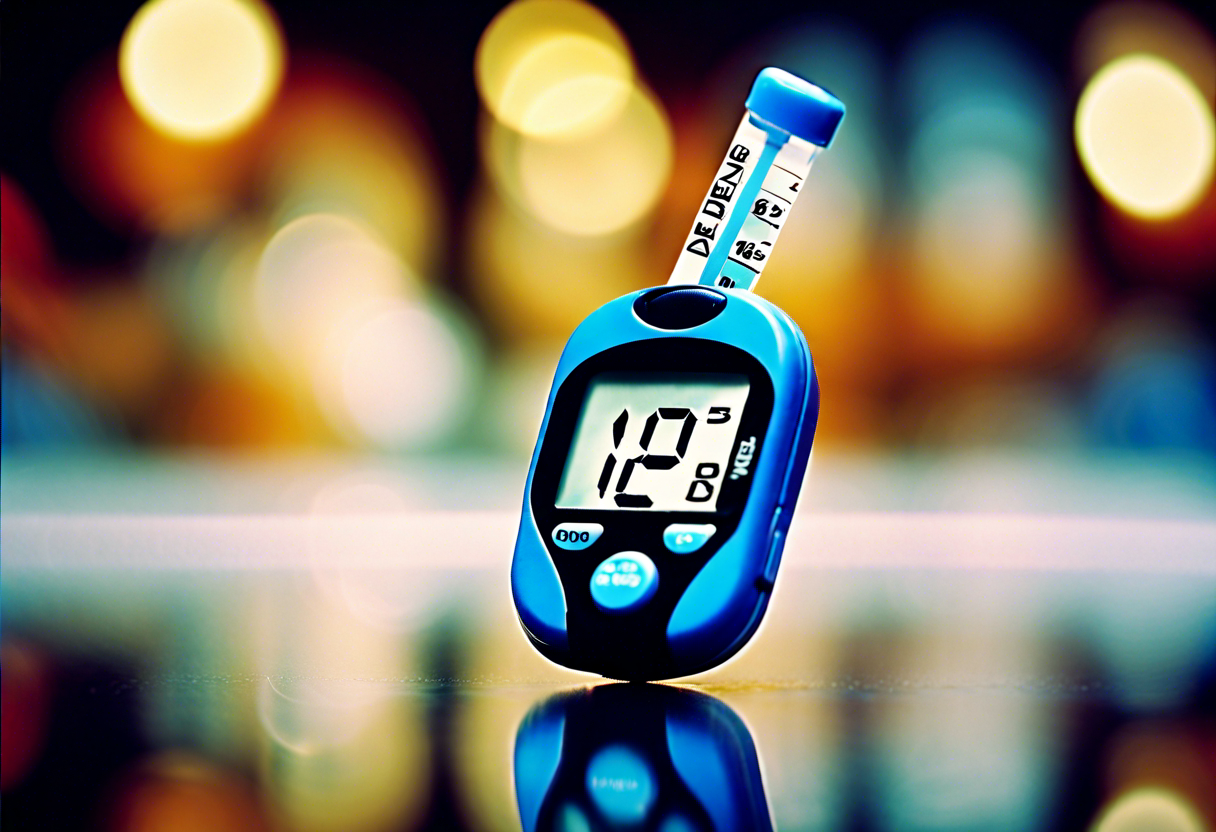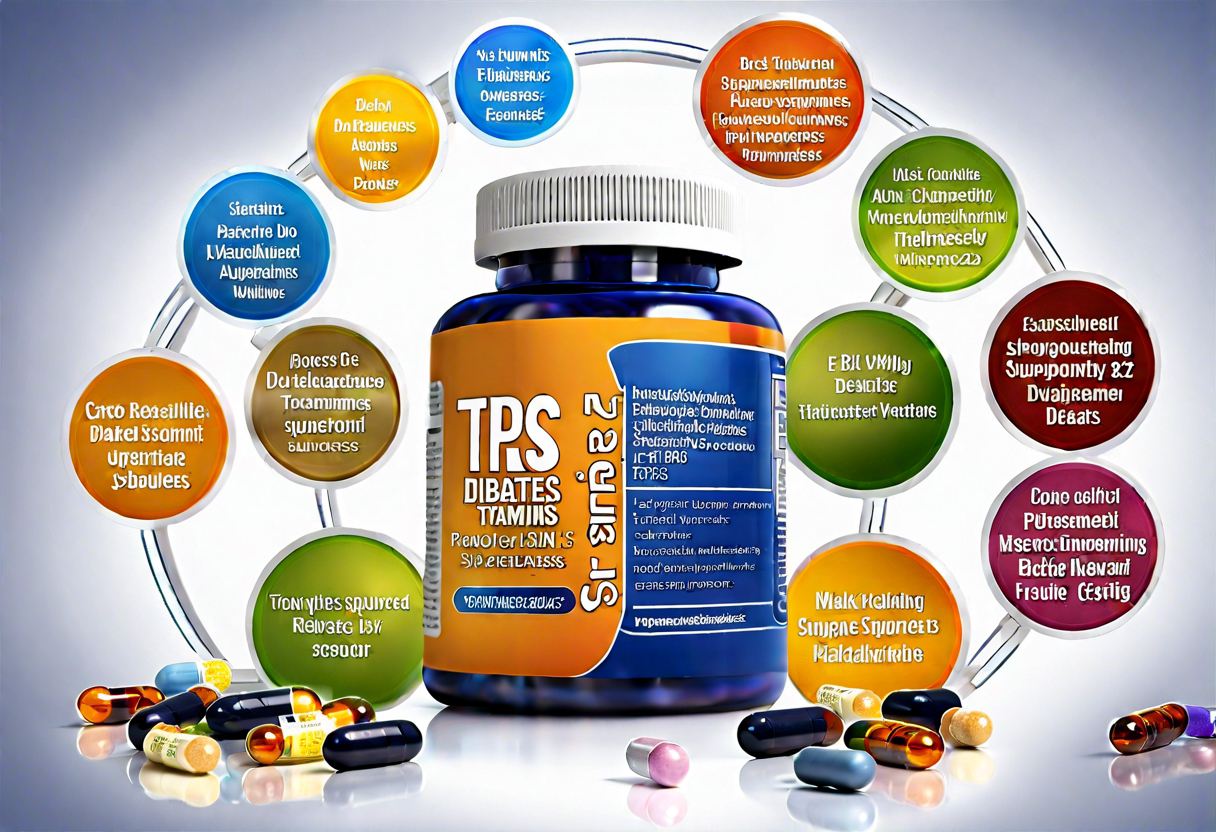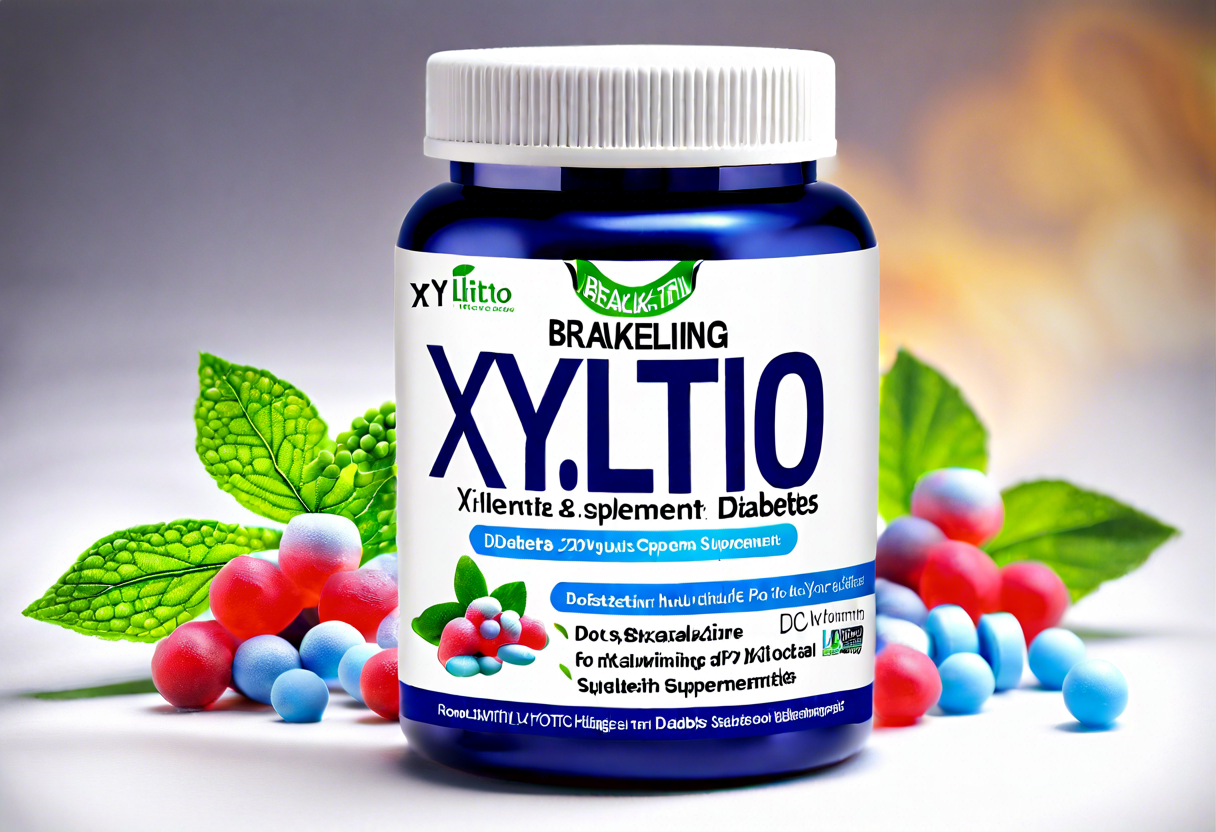Recognizing the Early Signs of Type 2 Diabetes
Type 2 diabetes is a chronic condition that affects millions of people worldwide. It occurs when the body becomes resistant to the effects of insulin or doesn’t produce enough insulin to maintain normal blood sugar levels. Recognizing the early signs of type 2 diabetes is crucial for timely diagnosis and effective management of the disease. Here are the top 10 early signs you should watch out for:
1. Frequent Urination: Increased frequency of urination, especially during the night, can be an early sign of type 2 diabetes. This happens when excess sugar builds up in your bloodstream, prompting your kidneys to work harder to eliminate it.
2. Excessive Thirst: Unquenchable thirst, also known as polydipsia, is another common early sign of type 2 diabetes. When blood sugar levels are high, your body tries to dilute the excess sugar by drawing fluid from your tissues, leading to increased thirst.
3. Unexplained Weight Loss: Sudden, unintentional weight loss can occur as the body breaks down tissue and muscle to compensate for the lack of insulin. If you are losing weight without changing your diet or exercise routine, it may be a sign of underlying diabetes.
4. Fatigue: Chronic fatigue and a general feeling of being tired are common in people with undiagnosed type 2 diabetes. Insulin is responsible for transporting sugar from the bloodstream to the cells to produce energy. Without enough insulin, glucose remains in the bloodstream, leading to fatigue.
5. Increased Hunger: Despite eating a balanced meal, individuals with type 2 diabetes may experience persistent hunger. This is caused by the body’s inability to properly metabolize glucose, leaving the cells deprived of energy.
6. Slow Healing: Slow healing of wounds or frequent infections can be an early sign of type 2 diabetes. Elevated blood sugar levels can impair the body’s immune response, making it difficult for wounds to heal and infections to clear up.
7. Blurred Vision: High blood sugar levels can cause the lenses in your eyes to swell, leading to blurry vision. If you notice sudden changes in your vision or difficulty focusing, it’s essential to get your blood sugar levels checked.
8. Numbness or Tingling: Known as diabetic neuropathy, numbness or tingling in the hands and feet can occur as a result of nerve damage caused by high blood sugar levels. This condition can also cause pain and a burning sensation.
9. Darkened Skin: In some cases, individuals with type 2 diabetes may develop a condition called acanthosis nigricans, characterized by darkened, thickened patches of skin. Typically found in the armpits, neck, or groin, these patches can be an early indicator of insulin resistance.
10. Increased Infections: Diabetes weakens the immune system, making individuals more susceptible to infections, such as urinary tract infections (UTIs) and yeast infections. If you notice a frequent occurrence of infections, it’s essential to discuss this with your healthcare provider.
Early detection and management of type 2 diabetes can significantly reduce the risk of complications. If you experience any of the above signs, it is crucial to seek medical attention promptly. A healthcare professional can perform the necessary tests to diagnose and provide appropriate treatment for type 2 diabetes.
Recognizing the Symptoms of Type 2 Diabetes in Children
When it comes to type 2 diabetes, most people tend to associate it with adults. However, this chronic condition can also affect children. It is essential for parents and caregivers to recognize the early signs of type 2 diabetes in children to facilitate early diagnosis and appropriate treatment. Here are some important symptoms to watch out for:
1. Increased Thirst and Frequent Urination: Excessive thirst (polydipsia) and increased urination (polyuria) are common indicators of type 2 diabetes in children. The body tries to eliminate excess glucose through urine, leading to increased fluid intake and subsequent urination.
2. Fatigue and Weakness: Children with undiagnosed type 2 diabetes may experience persistent fatigue and weakness. This is because the cells are not properly utilizing the glucose for energy.
3. Unexplained Weight Loss or Gain: Sudden weight loss or gain can be indicative of type 2 diabetes in children. Despite increased hunger, unexplained weight loss may occur as the body is unable to efficiently metabolize glucose. Conversely, weight gain can be a result of insulin resistance.
4. Slow Wound Healing: Delayed wound healing can be an early sign of type 2 diabetes in children. High blood sugar levels can impair the body’s ability to heal wounds, making them take longer to close and recover.
5. Increased Hunger: Experiencing constant hunger, even after meals, can be a sign of insulin resistance in children. The body’s inability to effectively transport glucose into cells can result in persistent hunger pangs.
6. Darkened Skin Patches: A condition called acanthosis nigricans can manifest as darkened and thickened patches of skin, typically around the neck, armpits, groin, or other body creases. This condition is often associated with insulin resistance and can be an early indicator of type 2 diabetes.
7. Frequent Infections: Children with undiagnosed type 2 diabetes may experience frequent infections, particularly in the urinary tract, skin, or genitals. High blood sugar levels create a favorable environment for bacterial and fungal growth.
If you notice any of these symptoms in your child, it is crucial to consult a healthcare professional for proper diagnosis. Early detection and management of type 2 diabetes can help prevent complications and ensure your child’s well-being.
Exploring the Connection Between Obesity and Early Signs of Type 2 Diabetes
Being overweight or obese can significantly increase the risk of developing type 2 diabetes. This chronic condition arises when the body becomes resistant to insulin or fails to produce enough of it, resulting in high blood sugar levels. While type 2 diabetes can affect anyone, regardless of their weight, obesity is a leading contributing factor. It is important to understand the relationship between obesity and the early signs of type 2 diabetes to take preventative measures and seek prompt medical attention if necessary.
One of the early signs of type 2 diabetes that people with obesity may experience is excessive hunger. This occurs because the body’s cells are not effectively utilizing insulin to convert glucose into energy. As a result, the cells send hunger signals to the brain, leading to increased food intake. This constant feeling of hunger, coupled with unexplained weight gain, can be an alarming indicator of the onset of type 2 diabetes.
Frequent urination is another common early sign of type 2 diabetes, especially in individuals with obesity. Excess glucose in the blood prompts the kidneys to work harder to filter it out, resulting in more frequent trips to the bathroom. If you find yourself needing to urinate more often, especially during the night, it is advisable to consult a healthcare professional for further evaluation.
In addition to increased hunger and frequent urination, individuals with obesity may also experience excessive thirst. High blood sugar levels can cause dehydration, leading to feelings of constant thirst and dry mouth. If you find yourself drinking more fluids than usual without relief, it could be an indication of early-stage type 2 diabetes.
Unexplained fatigue and a lack of energy are also potential early signs of type 2 diabetes, particularly in individuals who are overweight or obese. Insulin resistance prevents glucose from adequately entering the body’s cells, resulting in decreased energy levels. If you constantly feel tired or lacking in energy, it is essential to consider the possibility of diabetes and seek professional advice.
Obesity and type 2 diabetes often go hand in hand, with excess weight significantly elevating the risk of developing the condition. However, by adopting a healthy lifestyle that includes regular exercise, a balanced diet, and weight management, the risk can be minimized. It is crucial to recognize the early signs of type 2 diabetes, particularly in individuals who are overweight or obese, to seek appropriate treatment and take the necessary steps to prevent its progression.
Uncommon Early Signs of Type 2 Diabetes You Need to Know
When it comes to type 2 diabetes, most people are aware of the common symptoms such as increased thirst, frequent urination, and unexplained weight loss. However, there are also some lesser-known signs that can indicate the early stages of this condition. By being aware of these uncommon early signs, you can seek appropriate medical advice and take early steps to manage your health.
One of the unusual early signs of type 2 diabetes is frequent yeast infections. High blood sugar levels provide an ideal environment for yeast to grow, leading to an increased risk of infections in various parts of the body, including the mouth, genitals, and skin folds. If you notice recurring yeast infections that don’t seem to go away easily, it’s essential to consult with your healthcare provider.
Another uncommon early sign of type 2 diabetes is the darkening of certain areas of your skin, a condition known as acanthosis nigricans. Dark, velvety patches may appear on the neck, armpits, groin, or other areas with folds or creases. While acanthosis nigricans can occur in individuals without diabetes, it is often associated with insulin resistance, which is a precursor to type 2 diabetes.
Are you experiencing unexplained fatigue and lack of energy? This could be an early sign of type 2 diabetes. When your body is unable to efficiently utilize glucose for energy, it can lead to feelings of tiredness and weakness. If you find yourself constantly feeling fatigued, even after getting adequate rest, it’s worth discussing with your doctor to determine the underlying cause.
Frequent gum disease and dental problems may also be indicators of early-stage type 2 diabetes. High blood sugar levels can impair the body’s ability to fight off infections, making people with diabetes more susceptible to gum disease. Additionally, diabetes can slow down the healing process, making it more difficult to treat dental issues. Regular dental check-ups are crucial for maintaining oral health and identifying potential signs of diabetes.
Pay attention to changes in vision. Blurred vision or frequent bouts of blurry vision can be early signs of type 2 diabetes. High blood sugar levels can affect the lenses in your eyes, causing them to swell and affect your ability to focus. If you notice any changes in your vision, especially if it is accompanied by other diabetes symptoms, consult an eye specialist promptly.
Recognizing these uncommon early signs of type 2 diabetes is crucial for timely diagnosis and effective management. If you experience any of these symptoms or have concerns about your health, it’s important to consult with a healthcare professional for proper evaluation. By taking proactive measures, you can ensure early intervention and lead a healthier life.
Early Signs of Type 2 Diabetes in Women – What to Look Out For
Type 2 diabetes is a chronic condition that affects millions of people worldwide. It is characterized by high blood sugar levels, caused by the body’s inability to properly use insulin. While the symptoms of type 2 diabetes may vary between individuals, there are certain early signs that women should be aware of in order to seek early diagnosis and treatment.
Increased thirst, also known as polydipsia, is often one of the initial symptoms of type 2 diabetes in women. This occurs as a result of the body trying to remove excess glucose through urine, leading to dehydration and an increased need for fluids. Frequent urination, or polyuria, is another common sign, as the kidneys work harder to eliminate the excess sugar from the body.
Unexplained weight loss can also be an early indicator of type 2 diabetes in women. This occurs because the body is unable to properly utilize glucose for energy, so it starts breaking down fat and muscle instead. If you notice significant weight loss without any changes in your diet or exercise routine, it’s important to consult a healthcare professional for further evaluation.
Fatigue and weakness are often overlooked symptoms of type 2 diabetes in women. When blood sugar levels are high, the body’s cells do not receive enough glucose for energy production, leading to feelings of tiredness and lack of stamina. This can impact daily activities and overall quality of life.
Blurred vision is another early sign of type 2 diabetes in women. High blood sugar levels can cause the lenses in the eyes to swell, affecting their ability to focus. If you experience sudden changes in your vision, such as difficulty reading or seeing objects clearly, it’s important to have your eyes checked by an optometrist.
Persistent infections, such as yeast infections or urinary tract infections, may also indicate the presence of type 2 diabetes in women. High blood sugar levels create an ideal environment for bacteria and fungi to thrive, leading to recurring infections. If you notice a pattern of frequent or difficult-to-treat infections, it’s essential to consult a healthcare professional for further evaluation.
Recognizing the early signs of type 2 diabetes in women is crucial for early diagnosis and effective management of the condition. Increased thirst, frequent urination, unexplained weight loss, fatigue and weakness, blurred vision, and persistent infections are key symptoms to watch out for. If you experience any of these signs, it is advisable to consult a healthcare professional who can provide a proper diagnosis and develop an appropriate treatment plan tailored to your needs. Remember, early detection is key in managing type 2 diabetes and preventing complications.
Conclusion
To ensure optimal health and well-being, it is crucial to be aware of the early signs of type 2 diabetes. By recognizing these symptoms early on, individuals can seek timely medical intervention and make necessary lifestyle changes to manage their condition effectively. In this article, we have discussed the top 10 early signs of type 2 diabetes, how to identify symptoms in children, the link between obesity and the early signs of type 2 diabetes, uncommon signs to be aware of, and early signs specific to women.
Firstly, understanding the top 10 early signs of type 2 diabetes is essential for early detection. These include frequent urination, increased thirst, fatigue, blurry vision, slow-healing cuts or sores, sudden weight loss, tingling or numbness in the hands or feet, recurring infections, dark patches on the skin, and increased hunger. If any of these symptoms persist or worsen, it is important to consult a healthcare professional for further evaluation.
Recognizing the symptoms of type 2 diabetes in children is equally crucial. Children may exhibit signs such as increased urination, bedwetting (especially if they were previously dry at night), extreme thirst, fatigue, irritability, unexplained weight loss, and frequent infections. Understanding these signs can help parents and caregivers identify potential issues and seek appropriate medical care to ensure their child’s well-being.
There is a strong link between obesity and the early signs of type 2 diabetes. Excess weight can lead to insulin resistance, a key factor in the development of type 2 diabetes. As a result, individuals who are overweight or obese are at a higher risk of experiencing early signs of this condition. By managing weight through a healthy diet and regular exercise, individuals can reduce their risk and potentially prevent the onset of type 2 diabetes.
In addition to the commonly known signs, there are some uncommon early signs of type 2 diabetes that individuals should be aware of. These include frequent yeast infections, skin tags, acanthosis nigricans (dark, velvety patches on the skin), erectile dysfunction in men, and polycystic ovary syndrome (PCOS) in women. Recognizing these less obvious signs can aid in early detection and prompt medical intervention.
Furthermore, understanding the early signs of type 2 diabetes specific to women is vital. Some symptoms women should look out for include frequent urinary tract infections, vaginal yeast infections, hormonal imbalances (such as irregular periods), and gestational diabetes during pregnancy. Awareness of these signs empowers women to take prompt action and seek the necessary medical care to manage their health effectively.
By being aware of the early signs of type 2 diabetes and seeking appropriate medical intervention, individuals can effectively manage their condition and reduce the risk of complications. It is crucial to maintain a healthy lifestyle, which includes regular exercise, a balanced diet, and managing weight. Additionally, regular medical check-ups and screenings are essential for early detection and timely treatment. Remember, knowledge is power, and understanding these early signs can significantly impact overall health and quality of life.









